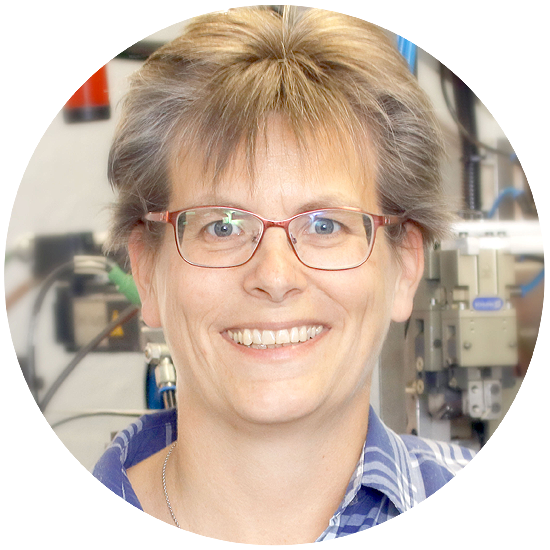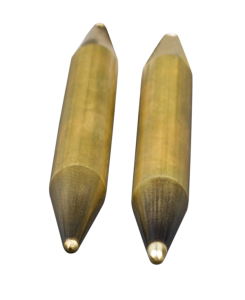Do you need a quotation or advice about our processes and services?
Our technical project manager Caroline Deutschmann, is happy to answer any of your questions.
Contact her directly at +49 (0)2352 9781 0.

POLISHING
POLISHING
Seltertech offers polishing of aluminium, brass, steel or plastic parts.
Our standard ø-range for semi-automatic polishing and hand polishing is between 1.5 mm and 25 mm in diameter. The length range covered is 85 mm to 400 mm. Speak to us about the details of your project or order.
PROCEDURE
Grinding the parts may be done, before the actual polishing process. This involves a metal-cutting machining process, in which material abrasion is achieved using a multitude of hard crystals (abrasive grains) of undefined geometries. When material is lifted from the surface by grinding, for example using an abrasive belts, it will leave scratches and abrasion marks. Such surface defects are removed by grinding, brushing and polishing. This grinding strokes are refined in successive steps using sanding belt with smaller grits.
The work pieces are brushed or polished, according to surface requirements. When brushing, either a cord or sisal brush with pastes containing fine abrasive granules are used.
In conventional polishing, temperatures up to 2000 degrees Celsius can be applied only briefly to the surface, since it can cause the top layer of the material to melt.
In electroplating, polishing is used mainly as a pre-treatment for decorative and technical-functional surfaces.
SEMI-AUTOMATIC POLISHING
Polishing is a smooth-finishing process. In an end-face polishing process, the frontal part of the component is passed over the polishing pad for example, cotton with polishing paste. This way, all protruding edges and indentations are removed, resulting in shiny a surface due to its smoothness. In a semi-automatic process, the components are transported from the repository on a conveyor belt which passes along a polishing pad.
When polishing, rings or pads are used with a special polishing paste to avoid any erosion of the material. The aim is to achieve a refined surface which makes the parts seem “as smooth as glass”.
HAND POLISHING
Hand polishing is used whenever the parts are geometrically complex or the length of the components is not compatible with the semi-automatic process.
This applies to all surfaces: the smoother and more enclosed the surface is, the less possibility there is for corrosion.
TECHNICAL PARAMETERS
The available polishing pads and pastes must harmonize with the rotational speed and feed rate of the polisher. This is individually determined according to the polishing task.
ADVANTAGES
Surfaces are polished for their glossy smoothness and used for decorative purposes.
Surface defects such as scratches, flaws and corrosions can be removed.
The polishing process can help to enhance the gliding properties.
Polishing is a critical pre-treatment step for subsequent coating processes such as copper plating, chrome plating or anodizing (anodizing treatment in accordance with DIN 17611 – E3, E5 -).
GUSTAV SELTER GmbH & Co. KG
Hauptstraße 2 – 6
58762 Altena
Germany
© COPYRIGHT 2016-2023 GUSTAV SELTER GMBH & CO. KG


